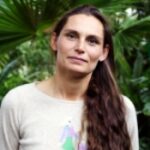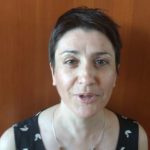Link to Pubmed [PMID] – 37329091
Link to DOI – 10.1103/PhysRevE.107.054408
Phys Rev E 2023 May; 107(5-1): 054408
Intermediate filaments form an essential structural network, spread throughout the cytoplasm, and play a key role in cell mechanics, intracellular organization, and molecular signaling. The maintenance of the network and its adaptation to the cell’s dynamic behavior relies on several mechanisms implicating cytoskeletal crosstalk which are not fully understood. Mathematical modeling allows us to compare several biologically realistic scenarios to help us interpret experimental data. In this study we observe and model the dynamics of the vimentin intermediate filaments in single glial cells seeded on circular micropatterns following microtubule disruption by nocodazole treatment. In these conditions, the vimentin filaments move towards the cell center and accumulate before eventually reaching a steady state. In the absence of microtubule-driven transport, the motion of the vimentin network is primarily driven by actin-related mechanisms. To model these experimental findings, we hypothesize that vimentin may exist in two states, mobile and immobile, and switch between the states at unknown (either constant or nonconstant) rates. Mobile vimentin is assumed to advect with either constant or nonconstant velocity. We introduce several biologically realistic scenarios using this set of assumptions. For each scenario, we use differential evolution to find the best parameter sets resulting in a solution that most closely matches the experimental data and then the assumptions are evaluated using the Akaike information criterion. This modeling approach allows us to conclude that our experimental data are best explained by a spatially dependent trapping of intermediate filaments or a spatially dependent speed of actin-dependent transport.


